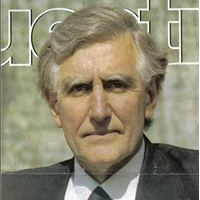Tissue Engineering in Cardiology
A special issue of Biomedicines (ISSN 2227-9059). This special issue belongs to the section "Biomedical Engineering and Materials".
Deadline for manuscript submissions: closed (30 June 2022) | Viewed by 17017
Special Issue Editor
Interests: cardiology; cardiac surgery; heart failure; cardiomyoplasty; cardiac bioassist; tissue engineering; bioartificial organs; stem cell therapy; organoids; bioartificial myocardium; cardiopatch; cardiowrap
Special Issue Information
Dear Colleagues,
Background
Cardiovascular tissue engineering involves the creation of myocardial tissue, heart valves, and blood vessels. After initial development of “in vitro tissue engineering”, progress has been made by the development of “in vivo tissue engineering” technologies, a biomimetic approach where the body is the own bioreactor. This in vivo approach represents a new hope for the creation of biomimetic tissues such as the myocardium, and bioartificial organs.
Myocardial tissue engineering has been explored with the aim to repair, replace, and regenerate the damaged cardiac tissue. Results of isolated stem cell therapy in cardiac diseases showed that cell bioretention and engraftment within infarct is low and that extracellular matrix (ECM) degradation contributes to adverse LV remodeling. The association of stem cells and elastomeric scaffolds in the form of “Cardiopatch” raises the expectations of achieving repair of the myocardial tissue to avoid ventricular chamber dilation and heart failure; this should delay or avoid the indication of heart transplantation.
Aims
Manuscripts including the following subjects are welcome:
- Research and development of bioabsorbable elastomeric Cardiopatch and Cardiowrap bioprostheses for myocardial repair and ventricular support;
- 3D cardiac muscle engineered using isolated cells, exosomes, and biodegradable polymer scaffolds to obtain specific structural and electrophysiological properties;
- Creation of an artificial extracellular matrix (ECM) to offer adequate cell niches for the homing of exosomes and stem cells;
- Effect of strain stimulation bioreactors to apply cyclic distension on engineered cardiac constructs, to improve cellular orientation;
- Tissue-engineered heart valves constructed for the purpose of designing replacement cardiac valves (from decellularized tissues or polymer scaffolds) as well as for generating models of valve disease;
- “Acellular biomaterials” become a feasible alternative to cell-based therapies. Rather than only acting as fillers for tissue defects, materials are now designed to interact with local tissues and cells, becoming active materials that truly harness and direct endogenous repair processes;
- The combination of three-dimensional bioprinting, bioreactors, stem cells, and exosomes could provide a novel enabling technology for the development of the next-generation human tissues and organs.
Dr. Juan C. Chachques
Guest Editor
Manuscript Submission Information
Manuscripts should be submitted online at www.mdpi.com by registering and logging in to this website. Once you are registered, click here to go to the submission form. Manuscripts can be submitted until the deadline. All submissions that pass pre-check are peer-reviewed. Accepted papers will be published continuously in the journal (as soon as accepted) and will be listed together on the special issue website. Research articles, review articles as well as short communications are invited. For planned papers, a title and short abstract (about 100 words) can be sent to the Editorial Office for announcement on this website.
Submitted manuscripts should not have been published previously, nor be under consideration for publication elsewhere (except conference proceedings papers). All manuscripts are thoroughly refereed through a single-blind peer-review process. A guide for authors and other relevant information for submission of manuscripts is available on the Instructions for Authors page. Biomedicines is an international peer-reviewed open access monthly journal published by MDPI.
Please visit the Instructions for Authors page before submitting a manuscript. The Article Processing Charge (APC) for publication in this open access journal is 2600 CHF (Swiss Francs). Submitted papers should be well formatted and use good English. Authors may use MDPI's English editing service prior to publication or during author revisions.
Keywords
- myocardial tissue engineering
- engineered heart valves
- elastomeric scaffolds
- stem cells
- exosomes
- cardiopatch
- cardiowrap bioprostheses
- 3d printing
- acellular tissue engineering
- heart failure






